It was a great loss to British horticulture when in 1999, Elizabeth Strangman closed the doors of Washfield Nursery in Kent. In the 30 or so years after taking over from Hilda Davenport-Jones in 1968, she established Washfield as one of the finest perennial nurseries in the country, with a particular focus
on the breeding of hellebores.
You may also like
- How to grow hellebores
- The remarkable colour of species hellebores
- An early spring plant pot idea using hellebores
- The best spring flowers to plant
- Garden step and ramp advice from an expert designer
Although it was a difficult decision for Elizabeth to close the nursery, she never stopped gardening. Many plants moved with her to a new home in East Sussex, where she bought a Grade II-listed cottage, its timber frame dating back to the 15th century. This characterful house provides a satisfying backdrop to the garden that she has tended for the past 20 years – a garden where her skill and knowledge reveals itself at every turn.
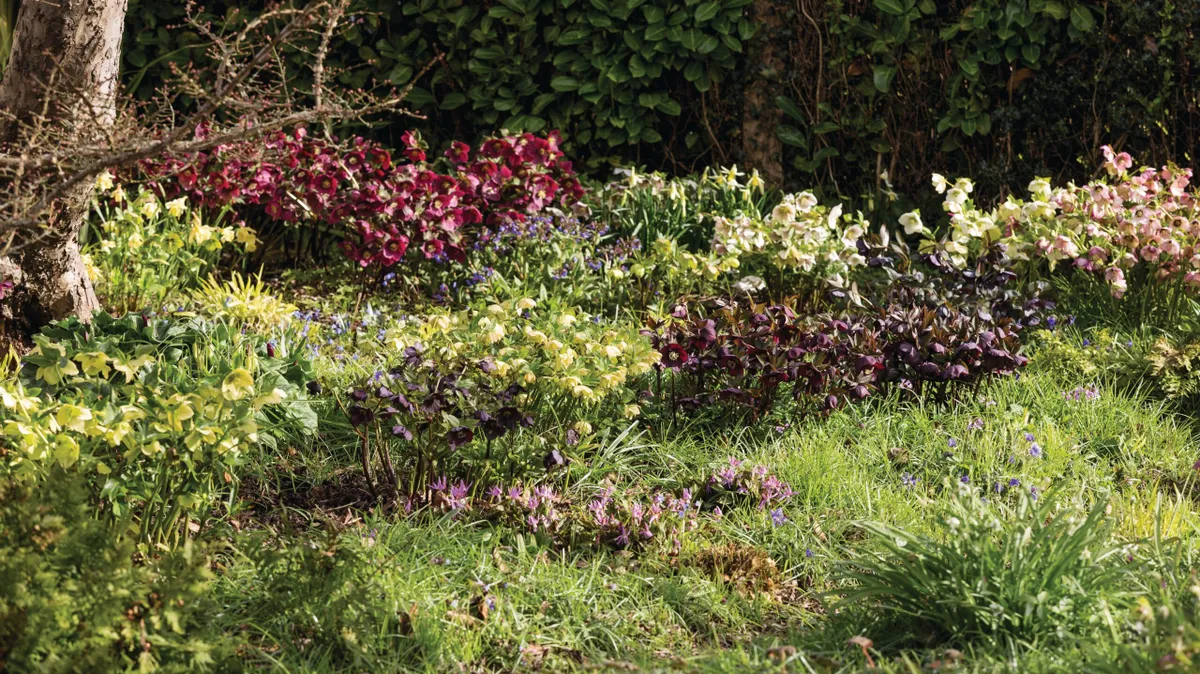
While I worked at Great Dixter, I was lucky to visit Elizabeth a number of times. My first visit was in late February when her spring garden was in full glory. Moving down a gentle slope towards the River Rother, hellebores, crocus and other early flowering plants spill out along a gravel and brick path, feathering the transition from this space into the summer garden area. By dividing the garden in this way, Elizabeth is able to enjoy the full intensity of spring without compromise, and she explains the necessity for periods of visual rest, so your focus can be drawn to other parts of the garden later in the season.
Apart from the now magnificent multi-stemmed acer, which rises above the spring garden, little remains of what existed before. Assisted by her friend and former Washfield employee Edward Flint, she dismantled the existing rockery, repurposing the stones and bringing in timber to make raised beds. As well as helping to level the slope, these beds ensure good drainage for Elizabeth’s unusual plant collection.
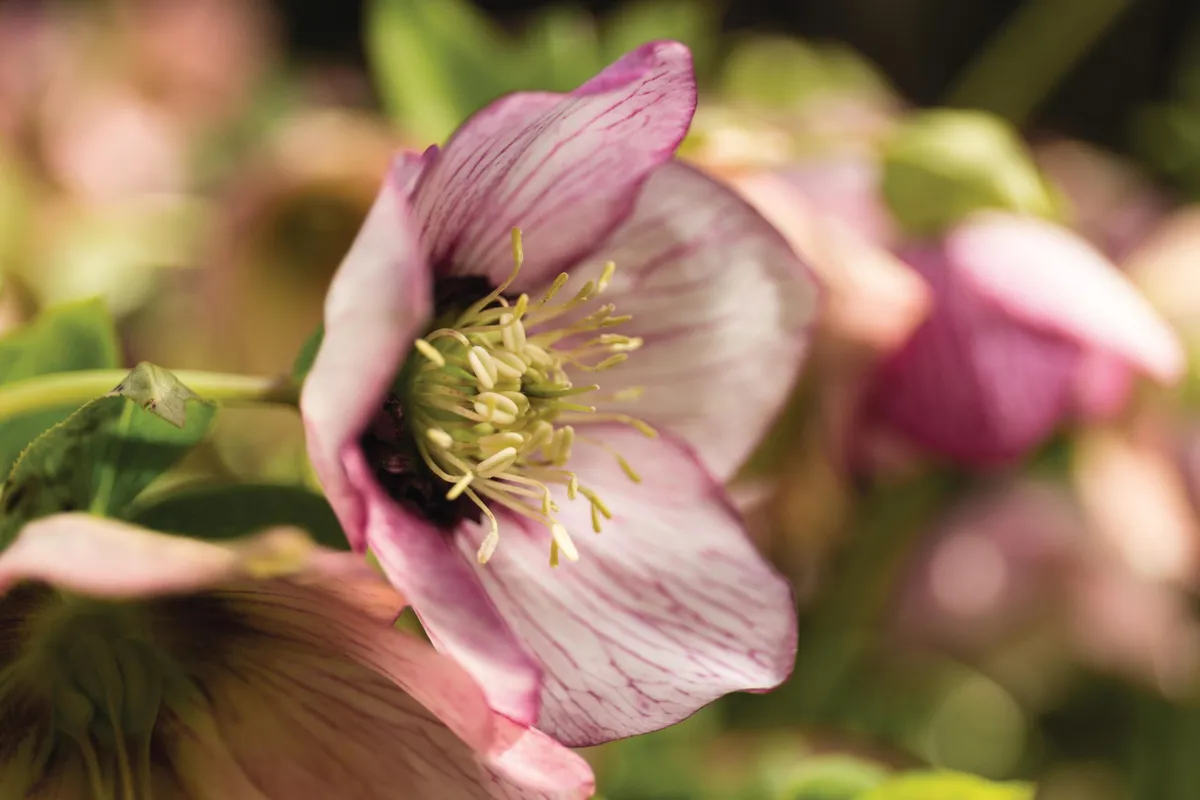
However, Elizabeth’s garden got off to a shaky start when, in December 2000, it was submerged under almost two metres of water after the Rother burst its banks, washing away much of the initial planting.
This trauma was set to recur a number of times before the local authority put in sufficient flood defences. Surveying the tapestry of spring bulbs among the stems of mature shrubs and emerging shoots of perennials, it’s hard to imagine such damage; rather its comfortable maturity is remarkable.
“The soil is extremely good,” says Elizabeth, as I bend to inspect the ground, a deep alluvial soil, which she has improved over the years with consistent application of mulch. This combination of moisture retention and drainage provides ideal conditions for her hellebores. While some mistakenly relegate these heralds of spring to dry shade, the best flowering comes from consistent moisture and more light than their woodland reputation might imply.
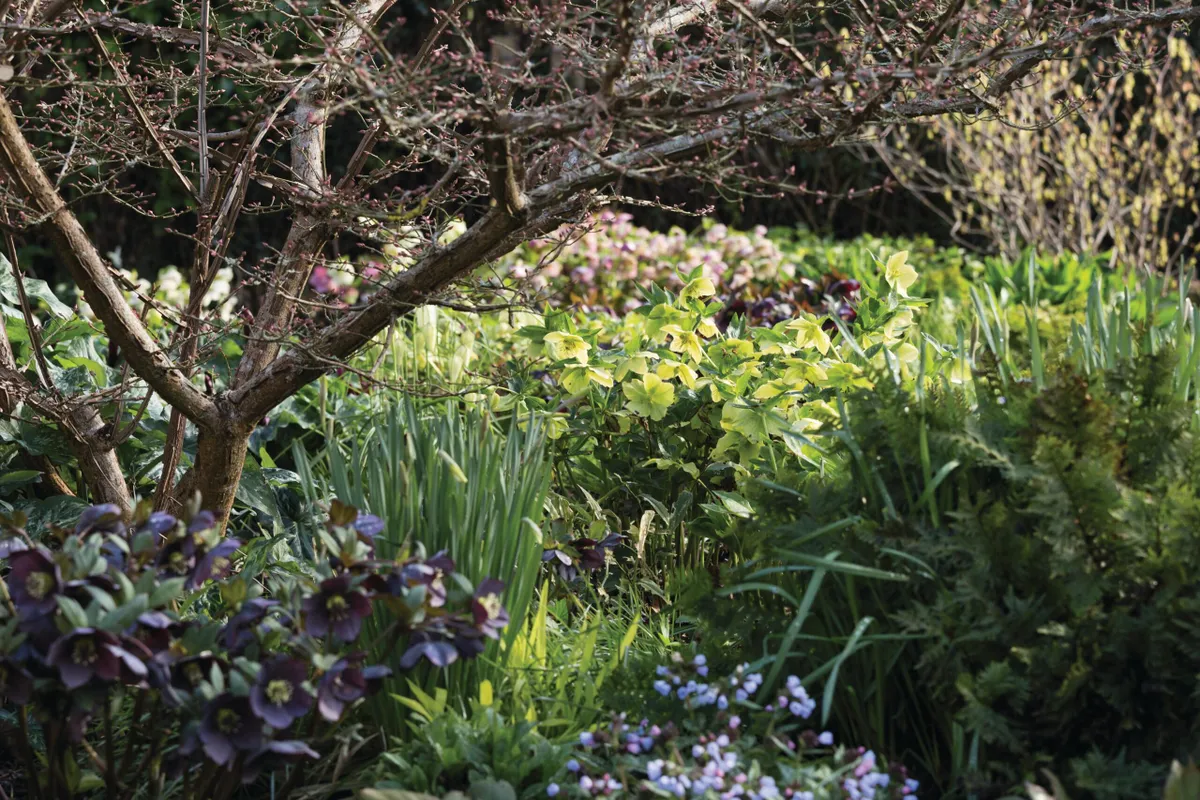
In shade that’s too dense, hellebores tend to produce large leaves at the expense of flowers, but in Elizabeth’s garden, under the fine cover of the deciduous acer, the plants are full of blooms. Many nurseries used to split and divide hellebores, but it was clear to Elizabeth this weakened the plants and that it was far better to develop reliable seed strains. “Seedling hellebores are so much stronger,” she explains. All the plants in Elizabeth’s garden are seed raised.
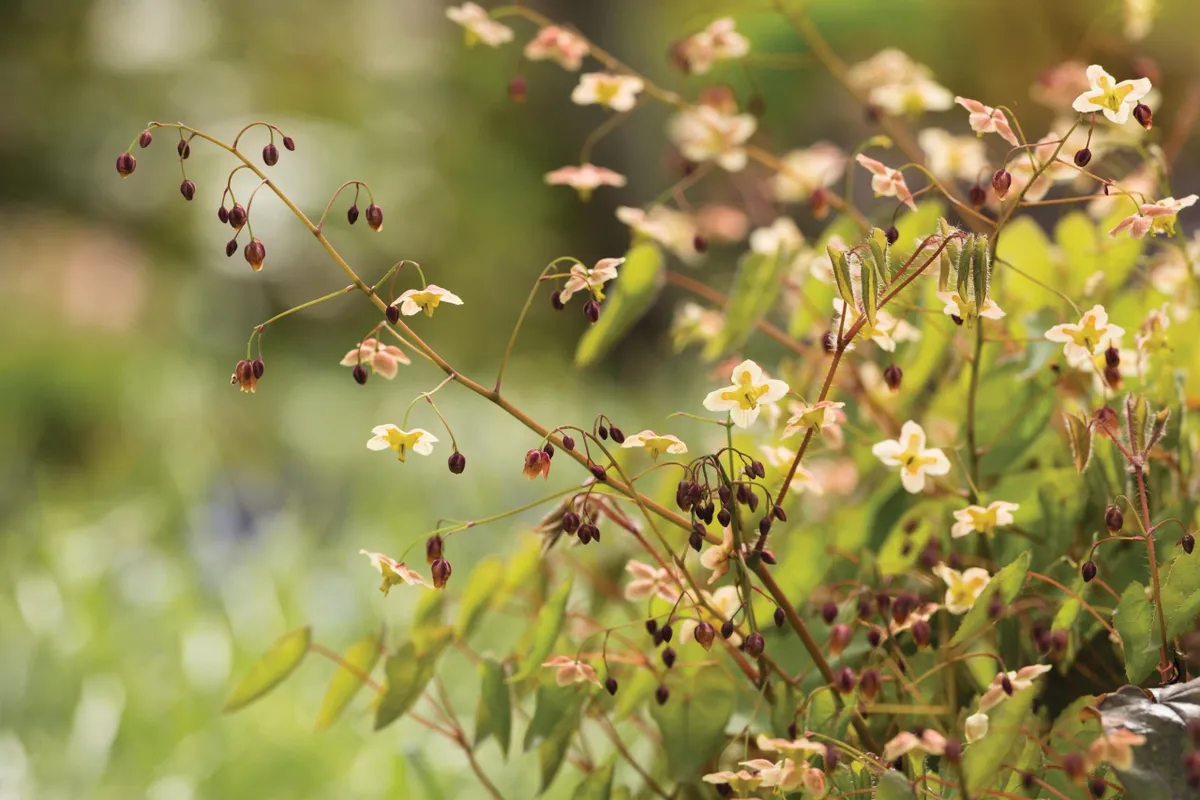
Now in her eighties, Elizabeth still does most of the gardening herself, spending weeks deadheading the hellebores to prevent self-seeding and ruthlessly removing any plants showing signs of virus. “I have zero tolerance for disease,” she says. While one corner of her garden holds the many hybrids she brought from Washfield, there are also a number of wild species, some of which Elizabeth collected on her multiple trips to the Balkans. She has always been critical of indiscriminate collecting, but was responsible for several exciting wild introductions, including two of the early double forms of Helleborus torquatus, which she named ‘Dido’ and ‘Aeneas’. Despite their novelty, these did not prove
to be good garden plants, and her later doubles derived rather from crosses between Helleborus x hybridus ‘Günther Jürgl’ and Helleborus x hybridus ‘Snow Queen’, which she sourced from Germany.

Walking with Elizabeth around her garden, you become acutely conscious of the very personal relationship she has with all her plants. They represent not only her own journey as a gardener, but are also reminders of her numerous horticultural friendships. “People were so generous to me,” she explains, recalling a time when Martyn Rix sent her seed of Epimedium davidii – a much desired plant that at the time was not in cultivation. In the garden today, she still has a corner of choice epimediums, and it is important to recognise that this garden is far more than a collection of hellebores.
While she has flown somewhat below the radar since the closure of Washfield, it is clear that Elizabeth’s eye for a good garden plant is as sharp as ever.
Hellebores from Elizabeth Strangman's garden
Helleborus x hybridus Picotee Group

Over the years, Elizabeth has established relatively stable hellebore breeding lines through her technique of hand-pollinating plants in the open ground without the risk of crossing. Of all her selections, she is proudest of her picotees – defined by a distinct dark edge to the sepals, often with prominent veining. 70cm. RHS H7†.
Helleborus x hybridus yellow
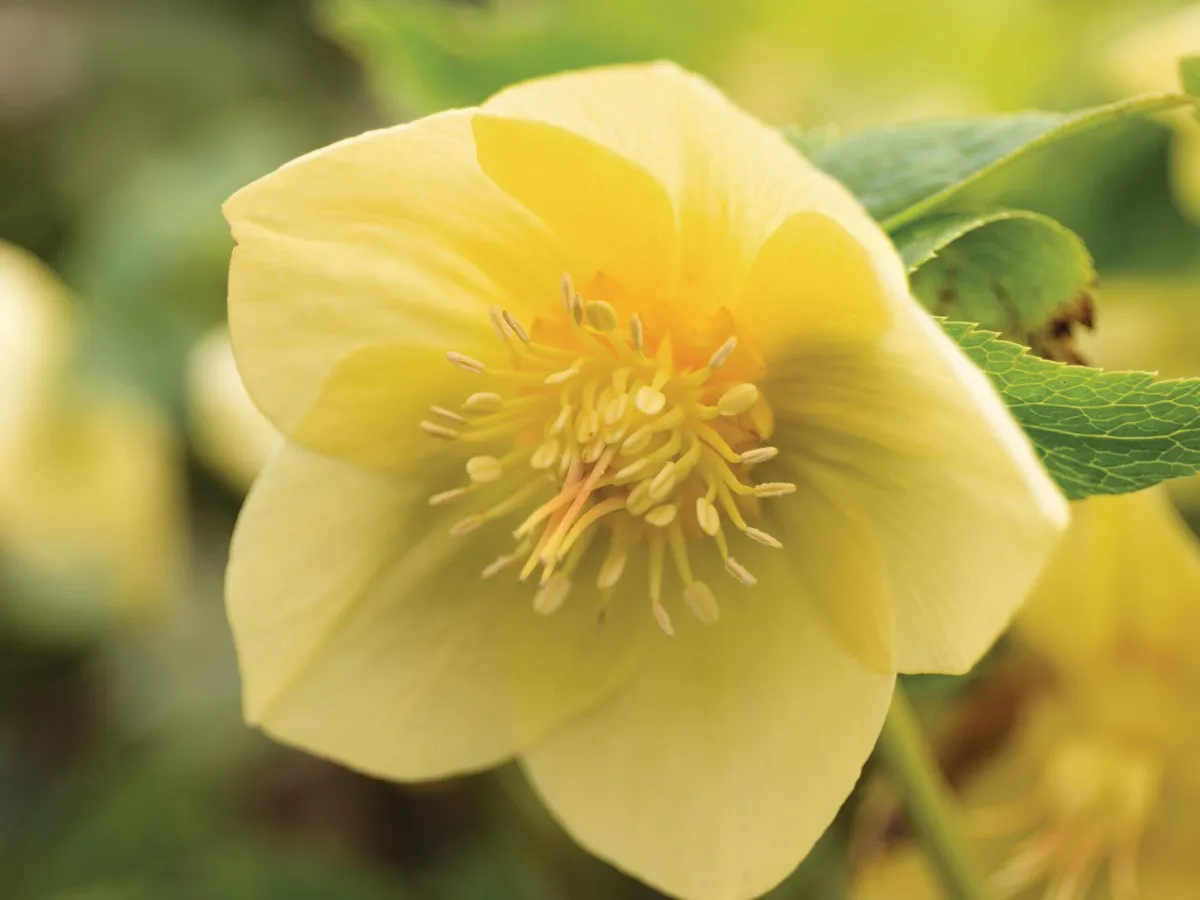
One of Elizabeth’s purest yellows. By back-crossing yellower forms of H. odorus with H. x hybridus, she has succeeded in producing some excellent yellows with red hearts and golden nectaries. 70cm. RHS H7.
Helleborus x hybridus ‘Queen of the Night’
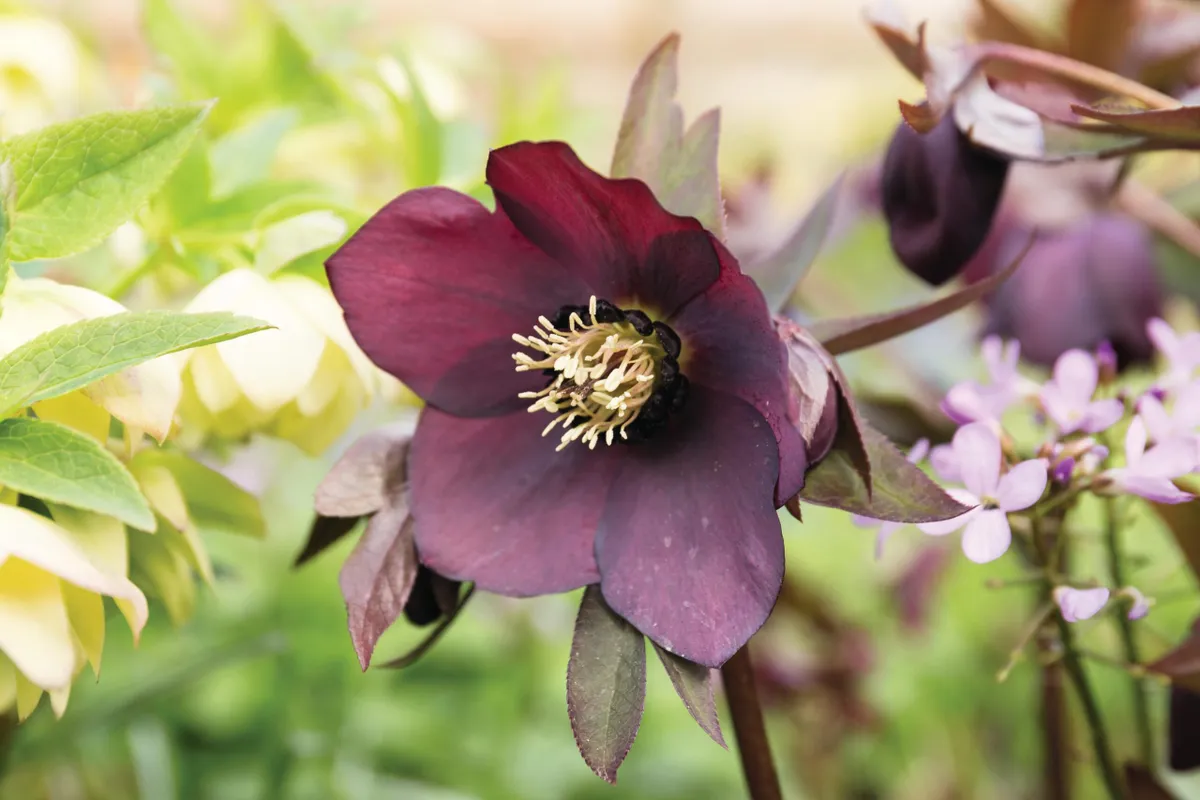
A rich purple-black selection. Elizabeth used some dark wild forms but her early selections used cultivated plants as parents. Eric Smith’s H. x hybridus ‘Pluto’ was a important parent for these. 70cm. RHS H7.
Helleborus x hybridus white with red heart
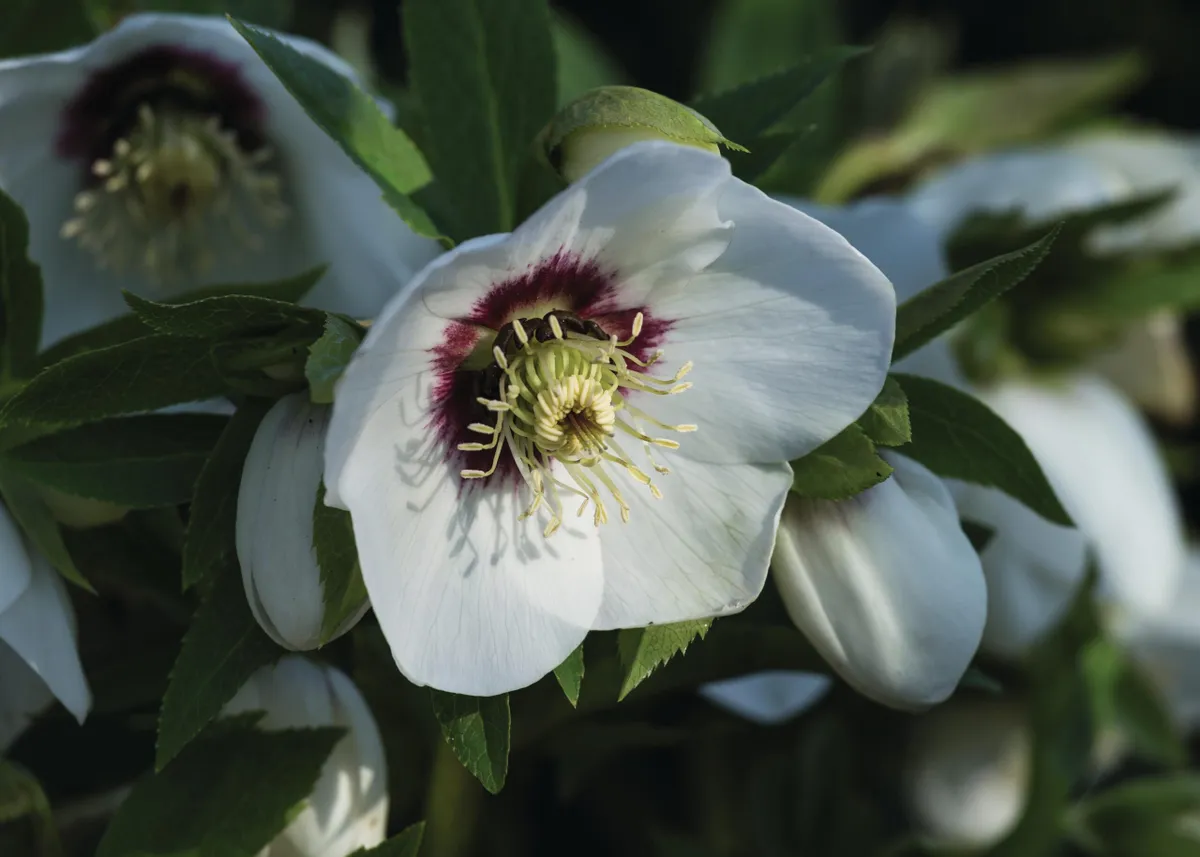
A seedling Elizabeth developed while working with Thompson & Morgan. A really clean white that contrasts beautifully with its red eye and comes reliably true from seed. 70cm. RHS H7.
Helleborus x hybridus green with red speckles
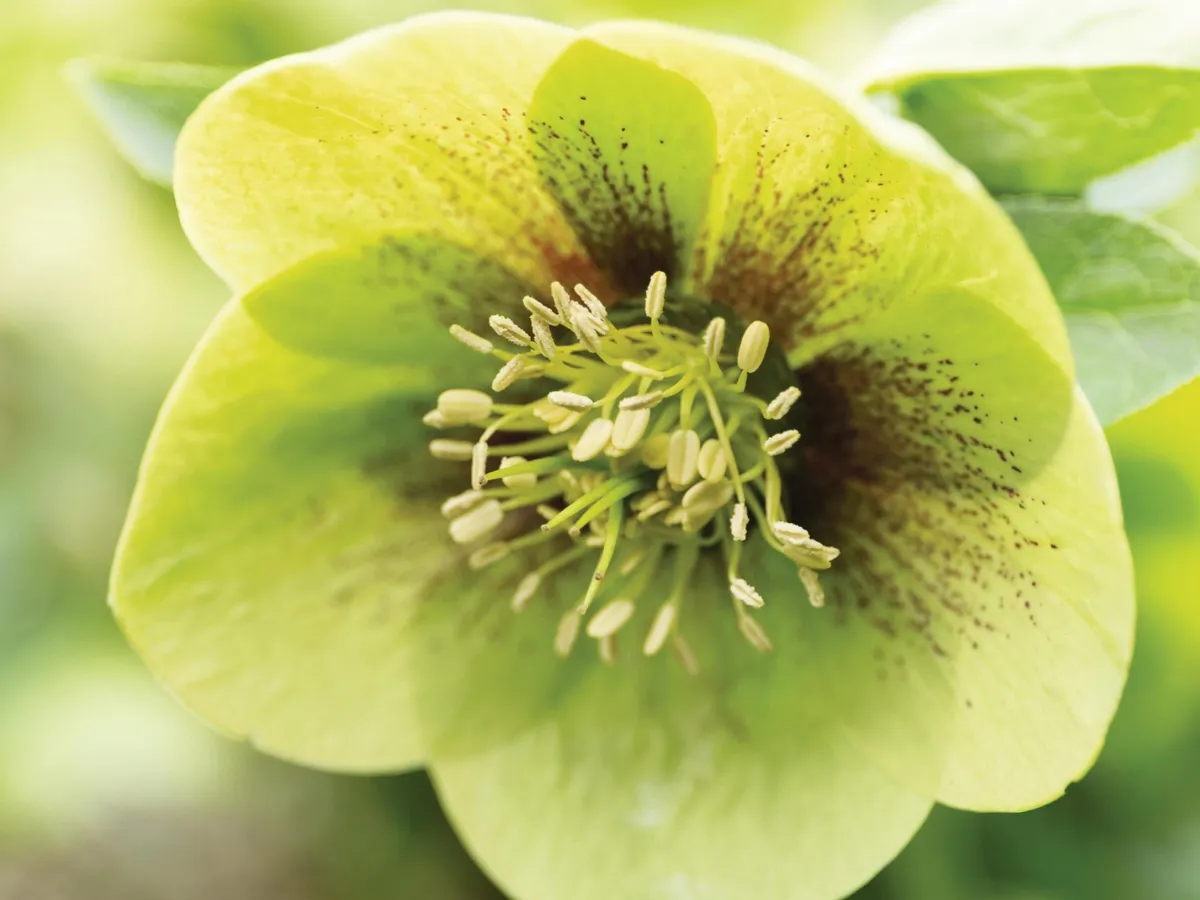
Elizabeth is adamant that a hellebore’s charm is in the moment of reveal when you turn its face. The hanging flowers also protect the pollen-laden anthers from the winter rains. 70cm. RHS H7.
Helleborus x hybridus good red
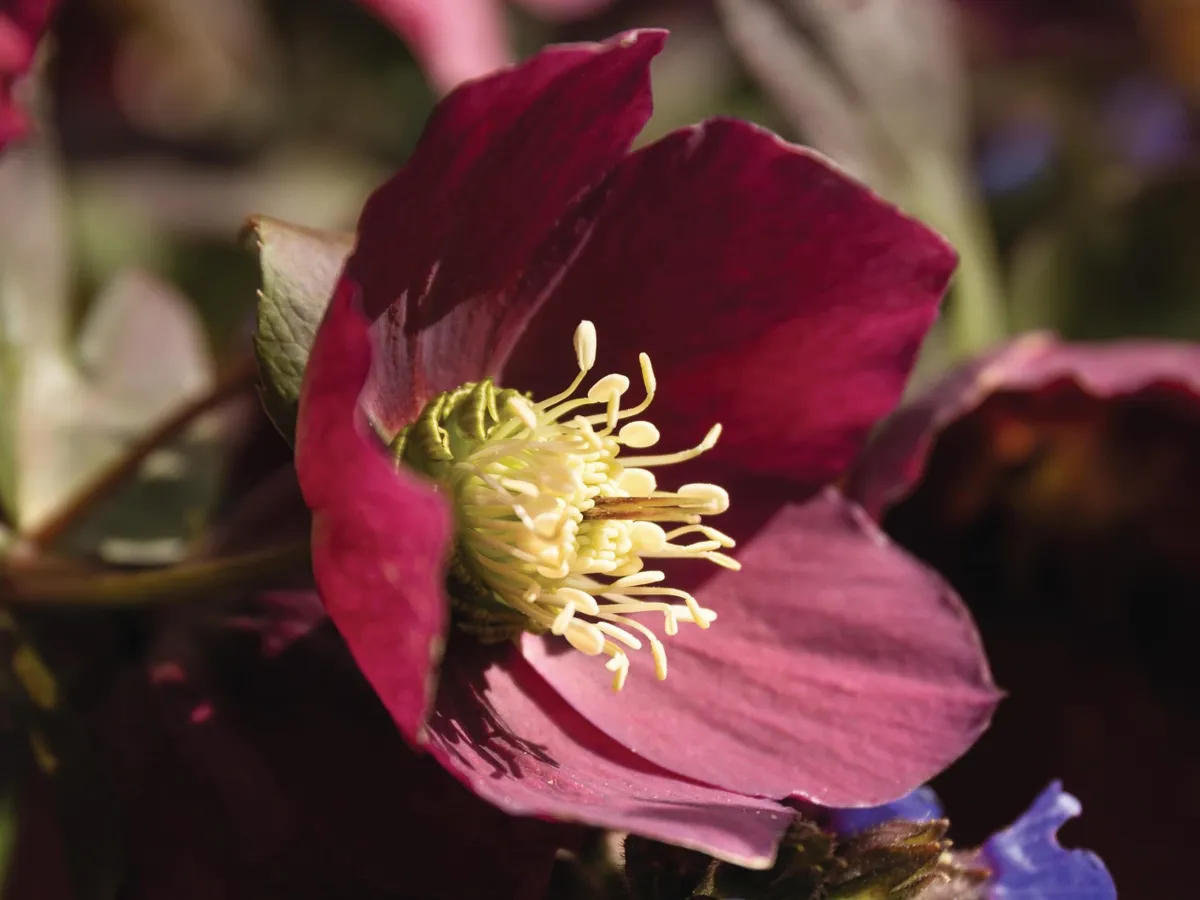
While originally many selections were created from open pollinated plants, Elizabeth spent years carefully selecting and hand pollinating to ensure uniformity within her strains. These reds were specially selected for their ability to hold their colour as they died off, giving a much longer season of interest. 70cm. RHS H7.
Helleborus x hybridus speckled white
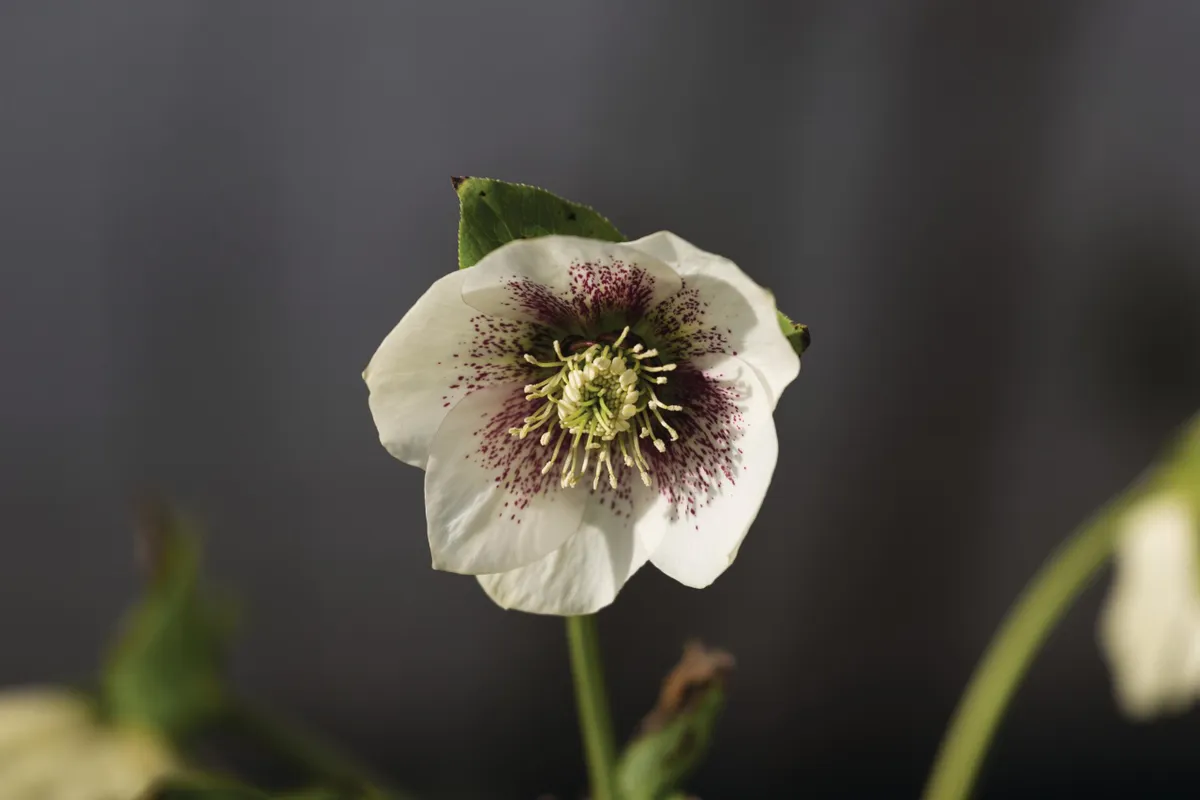
A very reliable strain, which sings against the darkness of freshly mulched ground. Elizabeth selected flowers with strongly overlapped sepals to give a delicate cupped form and her selections should always have as good a colour on the reverse as this is what you see most of the time. 70cm. RHS H7.
Helleborus torquatus
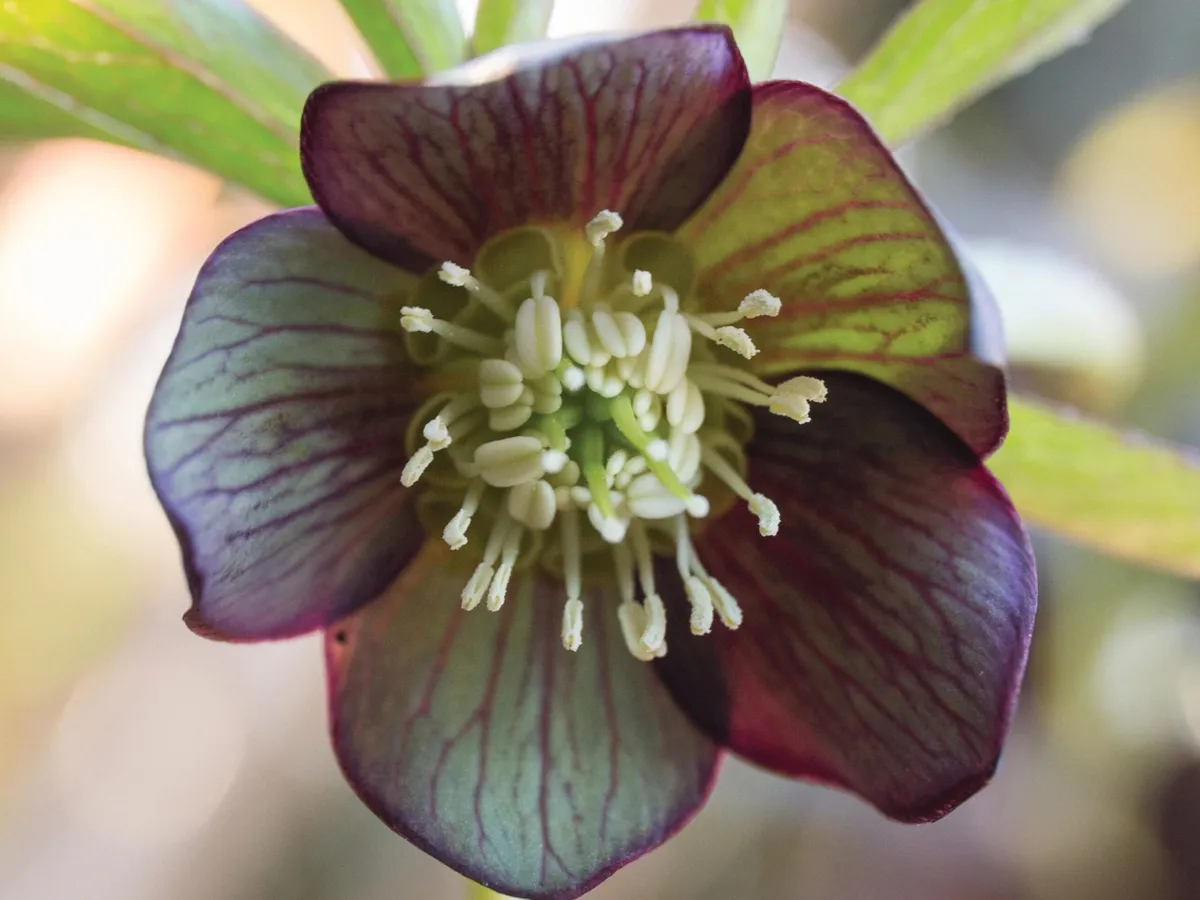
A small but beautiful species with green-purple flowers, sometimes heavily veined. The often highly segmented foliage is truly deciduous. 40cm. RHS H7.
